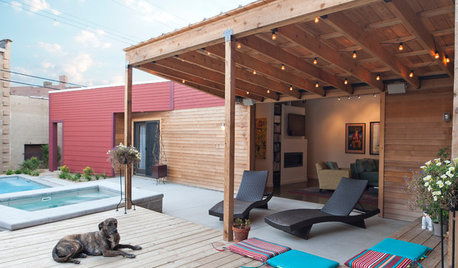Guess what I thought was Bermuda is really St Augustine?
pkapeckopickldpepprz
15 years ago
Related Stories

HOUZZ TOURSMy Houzz: Thoughtful Updates to an Outdated 1900s Home
Handmade art and DIY touches bring a modern touch to a classic Boston-area home
Full Story
FUN HOUZZEverything I Need to Know About Decorating I Learned from Downton Abbey
Mind your manors with these 10 decorating tips from the PBS series, returning on January 5
Full Story
DECORATING GUIDES21st-Century Looks for Shabby Chic Fans
How to update a style that's been popular since the 1990s? With new colors, crisper lines and contemporary settings
Full Story
CONTEMPORARY HOMESHouzz Tour: Outdoor Spirit in St. Louis
With a pool and central patio, this Missouri home on 3 lots lures everyone outside despite the handsome interiors
Full Story
DECORATING GUIDESI Spy: Union Jacks
British Flag Adds a Graphic Punch via Pillows, Paintings, Rugs and Furniture
Full Story
KITCHEN DESIGNSingle-Wall Galley Kitchens Catch the 'I'
I-shape kitchen layouts take a streamlined, flexible approach and can be easy on the wallet too
Full Story
THE POLITE HOUSEThe Polite House: Can I Put a Remodel Project on Our Wedding Registry?
Find out how to ask guests for less traditional wedding gifts
Full Story
UNIVERSAL DESIGNMy Houzz: Universal Design Helps an 8-Year-Old Feel at Home
An innovative sensory room, wide doors and hallways, and other thoughtful design moves make this Canadian home work for the whole family
Full Story
KITCHEN DESIGNKitchen of the Week: A Fresh Take on Classic Shaker Style
Quality craftsmanship and contemporary touches in a London kitchen bring the traditional look into the 21st century
Full Story
BATHROOM DESIGNArt Deco Style Meets Modern Sensibility in a Glamorous Master Bath
With a freestanding tub, meticulously cut tiles and a spacious walk-in shower, this St. Louis bathroom blends elegance and functionality
Full Story






texas_weed
pkapeckopickldpepprzOriginal Author
Related Professionals
Ballenger Creek Landscape Architects & Landscape Designers · Grand Haven Landscape Architects & Landscape Designers · Zion Landscape Architects & Landscape Designers · East Patchogue Landscape Architects & Landscape Designers · Arlington Landscape Contractors · Davis Landscape Contractors · El Mirage Landscape Contractors · Fort Atkinson Landscape Contractors · Kaneohe Landscape Contractors · Longview Landscape Contractors · Mercedes Landscape Contractors · Natick Landscape Contractors · Oak Harbor Landscape Contractors · Suitland Landscape Contractors · The Woodlands Landscape Contractorsbpgreen
pkapeckopickldpepprzOriginal Author
pkapeckopickldpepprzOriginal Author
gatorinfla
pkapeckopickldpepprzOriginal Author
pkapeckopickldpepprzOriginal Author
gatorinfla
bpgreen
gatorinfla
pkapeckopickldpepprzOriginal Author
texas_weed
lou_spicewood_tx
pkapeckopickldpepprzOriginal Author
pkapeckopickldpepprzOriginal Author
bpgreen
pkapeckopickldpepprzOriginal Author
bpgreen
texas_weed
pkapeckopickldpepprzOriginal Author
pkapeckopickldpepprzOriginal Author
bpgreen
lou_spicewood_tx
lou_spicewood_tx
pkapeckopickldpepprzOriginal Author
lou_spicewood_tx
texas_weed